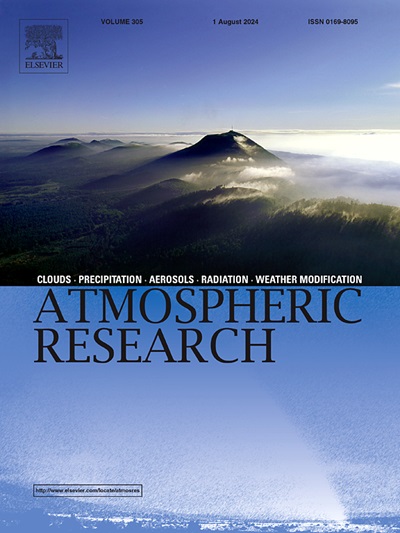Reduction in Arctic sea ice amplifies the warming of the northern Indian Ocean
IF 4.5
2区 地球科学
Q1 METEOROLOGY & ATMOSPHERIC SCIENCES
引用次数: 0
Abstract
The sea surface temperature (SST) in the tropical Indian Ocean(IO) has experienced rapid warming over the past 40 years. The reason for this phenomenon is still debated. Our study suggests that the decrease in Arctic sea ice during winter can influence the warming of SST in the Northern Indian Ocean (NIO) through three main pathway including atmospheric circulation, western Pacific SST and Tibet Plateau land. Firstly, the reduction of Arctic sea ice can trigger atmospheric teleconnection wave trains and circulation anomalies from the North Atlantic to the NIO, leading to anticyclone anomaly in the Bay of Bengal(BOB) that increases thermal contribution by radiation warming, as well as cyclonic anomalies in the Arabian Sea(AS) that increases dynamic contribution by warm current transport. Secondly, the reduction of Arctic sea ice can induce a wave train propagating from the Arctic through Eurasia to the western Pacific, resulting in anticyclone anomalies and SST rise in the South China Sea, thus enhancing the dynamic contribution of heat transfer through the Indonesian through flow(ITF). Thirdly,Arctic sea ice can enhances cross-equatorial flow by inducing warm surface temperature of the Tibetan Plateau.These three pathways will still exist until 2045 in future SSP245 emission scenarios.This study establishes a connection between the Arctic and the tropical IO, expanding our understanding of the relationship between these regions.
北极海冰的减少加剧了北印度洋的变暖
过去 40 年来,热带印度洋(IO)的海面温度(SST)迅速变暖。造成这一现象的原因仍存在争议。我们的研究表明,冬季北极海冰的减少可通过大气环流、西太平洋海温和西藏高原陆地等三个主要途径影响北印度洋海温的变暖。首先,北冰洋海冰的减少会引发从北大西洋到北印度洋的大气远缘波列和环流异常,导致孟加拉湾反气旋异常,增加辐射增暖的热贡献,以及阿拉伯海气旋异常,增加暖流输送的动力贡献。其次,北极海冰的减少会诱发从北极经欧亚大陆向西太平洋传播的波列,导致反气旋异常和南海海温上升,从而增强通过印度尼西亚贯穿流(ITF)的热传递的动力贡献。该研究建立了北极与热带IO之间的联系,拓展了我们对这些区域之间关系的理解。
本文章由计算机程序翻译,如有差异,请以英文原文为准。
求助全文
约1分钟内获得全文
求助全文
来源期刊

Atmospheric Research
地学-气象与大气科学
CiteScore
9.40
自引率
10.90%
发文量
460
审稿时长
47 days
期刊介绍:
The journal publishes scientific papers (research papers, review articles, letters and notes) dealing with the part of the atmosphere where meteorological events occur. Attention is given to all processes extending from the earth surface to the tropopause, but special emphasis continues to be devoted to the physics of clouds, mesoscale meteorology and air pollution, i.e. atmospheric aerosols; microphysical processes; cloud dynamics and thermodynamics; numerical simulation, climatology, climate change and weather modification.
 求助内容:
求助内容: 应助结果提醒方式:
应助结果提醒方式:


